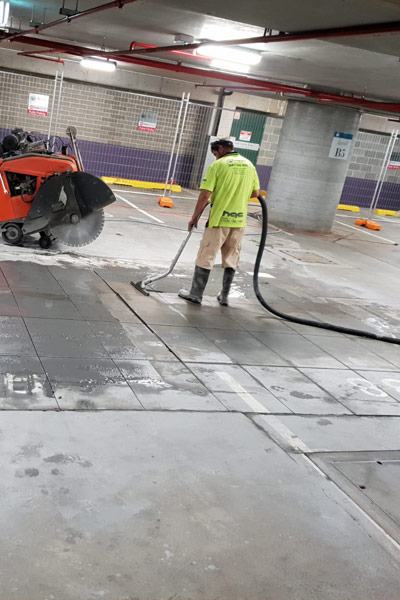Slurry pump services include using a slurry pump to move liquid with solid particles. The design of the slurry pump they use will vary depending on multiple factors:
- The concentration of solids
- The size of the solid particles
- The composition of the solution
Slurry pump services are so important because slurry is one of the most challenging fluids to move. This is thanks to its thick, highly abrasive, and sometimes corrosive characteristics; and being often highly concentrated with solids.
Examples of slurries are starch, manure, cement, coal suspended in water, and solids found in power generation, mining, foundries, and steel processing. No doubt, slurries are definitely tough on the pumps.
Thus, over the years, slurry pump services have been well-needed. Here’s a history of slurry pump and slurry pump services over the years.
Slurry Pump Services in 1874
In 1874, Wilson-Snyder was founded which provided quality and heavy-duty industrial pumps to the marketplace. They grew into the premier line of slurry, along with pipeline and refinery pumps. Due to the availability of industrial slurry pumps, slurry pump services have become more efficient and effective.
Slurry Pump Services in 1921
Jeumont-Schneider manufactured water and slurry pumps in Jeumont, France, in 1921. Eventually, solids-handling pumps and multistage pumps with segmental ring sections were developed from this.
The solids-handling pumps enabled slurry pump services experts to manage high solids and heavy slurry situations with ease. This is due to the Solids Handling and Slurry Pumps being designed with a large flow path that is suited for handling difficult-to-handle slurries.
In the same year, Dorr-Oliver Pump Company introduced the OLIVITE series of centrifugal that are meant for slurry transfer.
Slurry Pump Services in 1939
The Dorr-Oliver Pump Company later developed the Oliver Diaphragm Slurry Pump for transferring slurries. Initially, this was designed for mining slurry transfer along with their associated acids.
At this time, slurry pump services were highly recognized for playing a key role in mining processes that involve water and along with other liquids. In mines, there are always large tonnages of slurry to handle. New mines are always being developed, along with environmental requirements that need to be fulfilled.
Slurry Pump Services in the 1970s
Later on, the technology developed into a Primary Sludge Underflow Pump in the 1970s after the Clean Water Act. By this time, slurry pump services have become quite useful, especially in the wastewater industry.
Slurry Pump Services in the 1990s
In the year 1990, slurry pump services have been needed for the hydraulic transport of oil sands tailings. This is because, in the same decade, the first hard metal slurry pump was developed for this purpose.
Slurry Pump Services in 2022
Concrete cutting slurry control is one of the main slurry pump services in 2022. As there is concrete slurry as the byproduct of the concrete sawing and diamond grinding process. A concrete slurry cleaner is needed to remove the slurry efficiently.
At this time, slurry pump services are highly recognized as important services for wastewater management and helping to control environmental concerns.
What to Look For in a Slurry Pump Services Provider
When looking for a slurry pump services provider, it can be tempting to rush and choose the first company you engage with. However, it’s important to engage with a reliable partner from the get-go to save time, and ensure the process is done effectively.
1. Look at their equipment
What model of slurry pump do they use? Most pumps are specific to the kind of slurry being managed. For example, if they’re handling concrete slurries due to concrete sawing, are they using the slurry pumps relevant to this?
2. Check their warranty
Do they have any warranty claims? Do they fulfil them quickly and hassle-free and ensure you have the best slurry pump services that match your needs?
3. They have a proven track record.
Check their website, references, relevant forums, and social media sites. Do they have customers that back up their claims, or do they have negative complaints all over social media?
The Perception of Slurry Pump Services Over the Years
It’s important to dispose of slurries properly especially when they can largely impact the surrounding environment. For example, if a slurry runs down the pipes, the process of pipes eroding would accelerate. This will later lead to the stopping of the flow of water and eventually causing a flood.
Furthermore, if slurries are not well-controlled, they can negatively affect the ocean. This is because the storm drain and the ocean are closely connected. The slurry used in the production of concrete often has high pH levels. It’s extremely alkaline. Thus, when it comes in contact with the ocean, it can seriously affect aquatic life. If left to dry, the slurry will be left to dry and will impact the streams, and lakes, and even mix into the air we breathe.
 The impact of slurry is heavy on the environment, and possibly our health. Thus, over the years slurry pump services have been perceived to be highly beneficial to the health of the people and the earth.
The impact of slurry is heavy on the environment, and possibly our health. Thus, over the years slurry pump services have been perceived to be highly beneficial to the health of the people and the earth.
As slurry pump technology steadily developed over the past years, slurry pump services became more common, efficient, and advanced over the years. The continuous developments also enlarged the contribution of slurry pump services in caring for the environment. This is especially true for various industries, including but not limited to managing mining slurries, wastewater management, and cleanup of concrete slurries.
Before I end this blog, give a chance to discuss with you the proper handling tips when performing concrete slurry control. The diamond grinding and concrete sawing processes produce an inert residue that is not hazardous. This byproduct is called concrete slurry dewatering, and it separates the concrete slurry into solids and clean, clear water. The typical composition of slurry includes two components: cooling water and concrete fines that have been brought into suspension through either the grinding or sawing procedure.
Saw blades are given water in order to lengthen the amount of time they are expected to last, reduce the amount of dust that they produce, and improve the safety of the workers. But to completely mitigate the perils thereof, concrete slurry control must be implemented throughout the construction process. And for starters, here’s 3 proper handing tips from experts in executing concrete slurry control efficiently.
1. Solid Handling
The issue with solids is that they are resistant to motion of any kind. Because of this, the solids will frequently settle out of the slurries, thus making concrete slurry control hard. Because the movement of the liquid is the only factor that can stop such settling from occurring, we refer to slurries as either settling or non-settling. When operating with solids that accumulate in pipework or vessels, these correlations don’t tackle the matter of the pressure-drop/flow frequency characteristics that arise.
The movement of the solids that are settling is a complicated process. Therefore, we have no choice but to rely on immediate scale-up methods that have already been shown to be effective for solids that do not settle. It is possible to increase the velocity further than the point of settling, which is known as saltation or choking. However, this will result in a higher pressure drop as well as increased pipe erosion and particle breakage. A good alternative to ensure the successful scaling up of a process is to transform a solids suspension that settles into one that does not settle.
2. Sludge Collection and Pond Emptying
It is possible to collect the slurry in watertight lug units and then transit it to lined settlement reservoirs that have been assembled by the owner or operator in concrete slurry control. These ponds are not suitable for use as long-term treatment facilities. It is permissible to build these ponds either inside or outside of the right-of-way. The engineer must give his or her stamp of approval to every location. In order to facilitate the settling of the solids and the sieving of the water for subsequent utilisation in the grinding process, these ponds will need to be constructed.
When the grinding process is finished, any excess water will be enabled to evaporate before the next step in concrete slurry control is taken. After they have been dried, the solids that are left over can be used as a backfill, as an element in recycled aggregate, or in any other application that is commercially useful. On-site management is possible for up to 0.5 cubic yards of concrete slurry solids at a time. If the solids from the concrete slurry are to be buried on the property, they must be buried at a depth of at least three feet below the substrate and cannot be buried closer than three feet to the groundwater level.
3. Slurry Spreading Method
In more rural areas that have slopes covered in vegetation, the slurry from the grinding process can be accumulated on the in-slopes as the operation moves further down the road. According to the design, the in-slopes need to have a gradient of 3:1 or less, should have a discernible upland back-slope, and the slurry needs to be deposited at a rate that prevents it from reaching the moistened perimeter of the highway trench. These requirements must be met for this concrete slurry control. There are some situations in which areas that do not have a discernible upland back-slope may also be adequate.

Prior to disposal, in-slope disposal areas need to be reviewed by the property owner and the operator (the contractor), and both parties need to come to an agreement about whether or not the area is suitable. This will ensure that the slurry does not run down into the wetted perimeter. In certain areas, it’s possible that additional monitoring is required. Prior to the beginning of any grinding or trimming operations, the owner or operator of the property is responsible for conducting a site inspection to locate environmentally sensitive areas.
The absence of a discernible upland back-slope may be an indication that the highway is located near a lake, stream, or other type of wetland. Check the documentation of the project for any mention of environmentally sensitive areas, such as areas with native vegetation or the like.
The slurry that is produced as a result of grinding in unauthorised areas must be collected and transported to the job site, where it will be disposed of in an area and taken under concrete slurry control that is not sensitive to the environment.
It is not permissible to let the slurry stream across the roadway into the lanes that are adjacent to it. The diamond grinding equipment must be outfitted with a vacuum system that is regularly maintained and has the capacity to remove all standing slurry. This will result in the roadway being left in a soggy condition after the shredder has passed over it.
Need Help with Concrete Slurry Control and Slurry Pump Services?
Advance cutting cares about the environment and will always leave the site clean. We begin the concrete slurry removal per request. Using a wet vac, we extract the slurry from the surface and transfer it to the drums in our cart and begin the proper disposal of concrete slurry. Contact us for reliable concrete slurry control and slurry pump services.
Get a quote for our slurry control services by filling out the form below:


Recent Comments